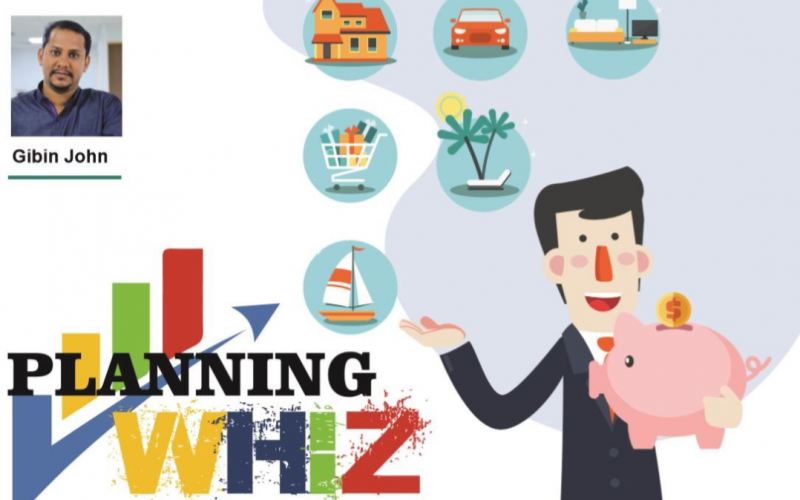A young couple wants to plan for their future. They want to invest for starting a new business venture, buying a car and their child’s education. Gibin John, Geojit’s Investment Analyst, analyses their current investments, assets and liabilities and helps them plan to achieve their goals.
My name is Sooraj and I am 35 years old. My wife is 33 years old. We have a son, age 6 and he is studying in the 1st standard. We are working in a private company. I am regularly doing stock trading and I have mutual fund investment also. Currently, we are getting monthly income of ₹ 1,00,000 after all deductions. Our monthly living expense is ₹ 60,000.
We are writing this mail for some valuable guidance from you on how to manage our money. Now I have a shareholding of ₹ 2 lakh and mutual funds worth ₹ 5 lakh. We also have a saving account balance of ₹ 3,50,000.
We are planning to start a business within five years and the expected cost is ₹ 15 lakh. One of us will be dedicatedly concentrating on business in the initial stage. We need ₹ 10 lakh for our son’s higher education. I want to change my car after 5 years and the expected cost is ₹15 lakh. We have 50 cents land worth around ₹3 crore. I am planning to utilise part of this land for finding the corpus for our post-retirement living expenses so there no need to plan for retirement.
Please guide us to manage our investments and money.
Gibin John, a certified financial planner replies:
You have made a good decision to take a financial advice and plan for your future goals. Currently you are getting ₹ 1 lakh as regular income. And your monthly expense is ₹ 60,000. The monthly surplus amount for investment is ₹ 40,000.
Firstly, you must set a contingency fund. This will help you cope with any unforeseen scenarios or emergencies in your personal life and may be either in cash or liquid assets. The primary objective is to enhance your financial stability and to protect your financial plan in case of emergencies. Normally the contingency fund is the 3 to 6 times of your monthly expenses. We recommend you utilize your existing savings account balance of ₹ 3 lakh as an emergency fund.
You are planning to start your business in five years and are expecting an initial investment cost of ₹ 15 lakh. This is your main goal since the future cash flow from the business will be based on the development of this business. You have already fixed the budget for this goal, so we are not considering the inflation on this cost. For creating this amount, you shall invest ₹ 22,000 monthly in debt mutual fund which can create more return than the bank recurring deposit. Ministry of Micro, Small & Medium Enterprises (MSME) has several schemes and programmes to help and assist entrepreneurs’, especially small businesses. You should enquire with concerned authorities on the government scheme available to get financial help for your business. If it is available, you can utilise the scheme to achieve your goal.
Your next goal is to invest for your son’s higher education. You are expecting ₹ 10 lakh for his education cost. Now assuming an 8% inflation over the next 11 years, the overall cost would be around ₹ 23.32 lakhs, at the time of higher education. You have a long-term investment horizon to achieve this goal so you can invest ₹ 10,500 in every month in equity oriented mutual fund. We were expecting 10% return from this investment during this period.
You are also planning to change your car in 5 years and the expected cost is ₹ 15 lakh. After taking inflation into consideration, we are expecting the cost of the same variant of car to increase by 6% per annum so the value of the car at the time of purchase will be ₹ 20 lakh. It will be difficult to find the entire amount from your existing investment and you will not have enough to start new investment for this goal after allocating the existing surplus amount to other goals. If the existing equity mutual fund investment of ₹ 5 lakh grow at 9% during this period, then the amount will become ₹ 7.69 in five years. For the balance amount you will have to depend on a car loan at that time. The EMI for shortage amount of ₹ 12.38 lakh will be ₹ 16,000, in five-year term at 10% rate. You can utilise the amount which was set aside for creating the corpus for your business venture to pay this EMI since you would have achieved the business goal in this period.
You have mentioned in the letter you don’t want the retirement planning. We recommend you start saving some amount for this purpose after five years. You should also take a family floater health insurance of ₹ 5 lakh immediately to protect your family from the higher medical expenditure. Also take term insurance of ₹ 1 crore to meet the living expenses and goals in your absence.





